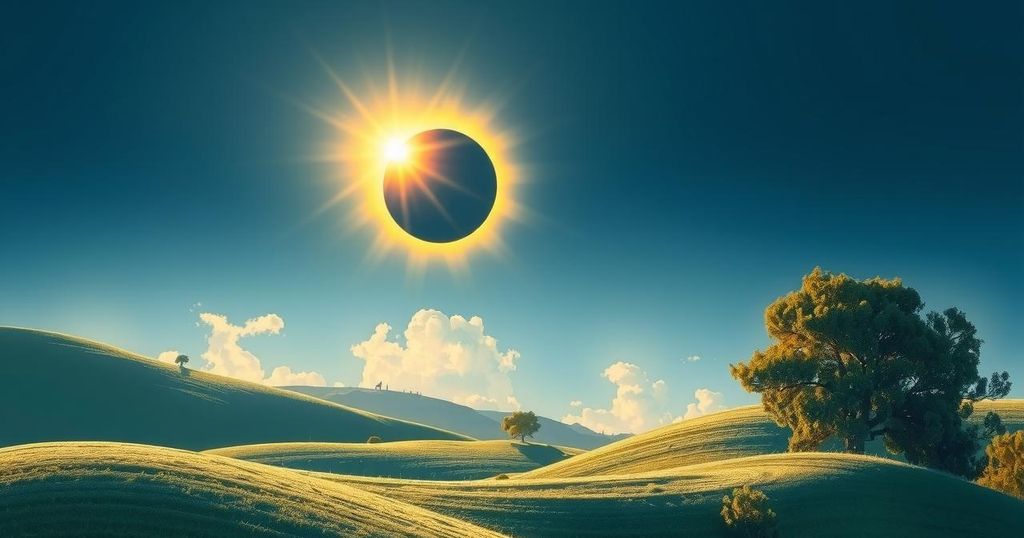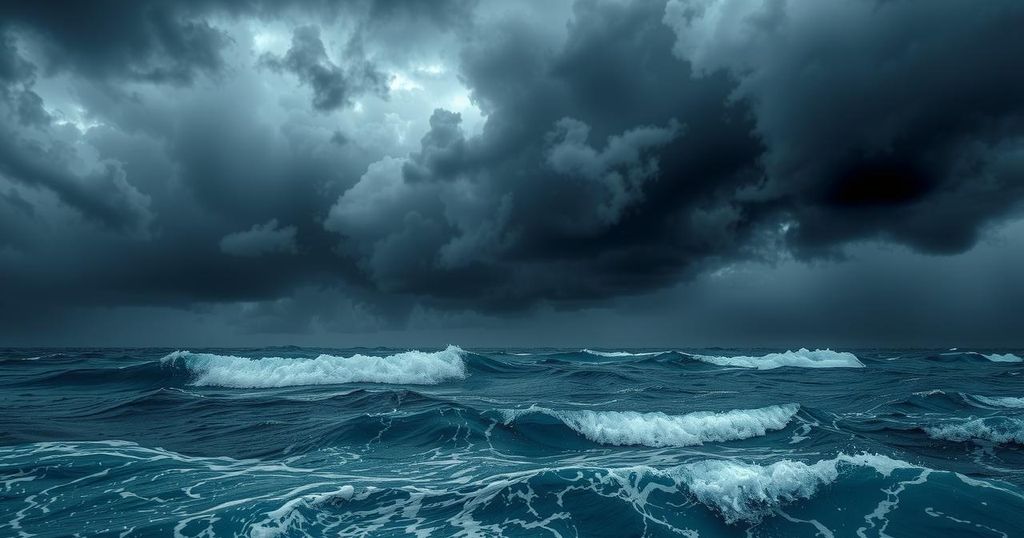Surya Grahan 2025: Eye Safety and Viewing Tips for the Solar Eclipse
The March 29, 2025 solar eclipse will be a partial eclipse, creating a double sunrise effect in certain regions while remaining invisible from India. Individuals in the US, Canada, Greenland, and Iceland can witness this event. Eye safety is crucial during the eclipse, necessitating proper protective gear. The eclipse will occur from 08:50 GMT to 12:43 GMT, with varying visibility across different areas.
On March 29, 2025, a partial solar eclipse, also known as Surya Grahan, will occur, where the Moon will obstruct part of the Sun’s light. This event, referred to as a double sunrise phenomenon, is particularly intriguing as it allows observers in certain regions to witness the Sun appearing to rise twice. However, it should be noted that this phenomenon will not be visible from India.
While many will not have the opportunity to see the eclipse from India, individuals located in parts of the United States, Canada, Greenland, and Iceland will be fortunate enough to observe it. Those eager to experience the solar eclipse can either travel to these regions or view it live online from their homes.
The timeline for the eclipse in Indian Standard Time is as follows: it will commence at 2:20 PM, reach its peak at 4:17 PM, and conclude by 6:13 PM, with a total duration of approximately four hours. In certain locations, the eclipse will be ongoing during sunrise, resulting in the spectacular illusion of two sunrises, one while the Sun is obscured and another as the eclipse concludes.
Visibility for the eclipse spans from eastern Canada to northern Russia, as well as parts of Europe and some areas in northeastern North America and northwest Africa. The Paris Observatory indicates that the eclipse will start at 08:50 GMT and finish by 12:43 GMT, with varying degrees of obscuration depending on the location.
Astronomer Florent Deleflie remarked that this particular event will see the Moon obstructing up to 90% of the Sun in certain northern latitudes, resulting in a phenomenon termed “cold light.” In regions like France, only 10-30% of the Sun’s disc will be obscured based on specific localities.
To ensure eye safety during the solar eclipse, NASA emphasizes the need for certified eclipse glasses or solar viewers. Regular sunglasses are unsuitable for this purpose. It is vital to check eclipse glasses for any damage and supervise children while using them. Additionally, eclipse glasses should never be used with telescopes or similar devices, as they do not provide adequate protection against the intense sunlight.
Viewing the eclipse without eye protection is only safe during totality, which is the moment the Moon completely blocks the Sun. Observers must put their eclipse glasses back on the instant any part of the Sun is visible again. Furthermore, if remaining outside for extended periods, individuals should apply sunscreen, wear hats, and don protective clothing to shield against sunburn.
The March 29, 2025 solar eclipse offers a captivating opportunity for those in specific regions of the world to witness a rare celestial event. With necessary precautions for eye safety being paramount, this eclipse serves as a reminder of the majestic alignment of our celestial bodies. Observers should plan accordingly, whether by traveling to visible areas or through online streaming, to embrace this extraordinary phenomenon safely.
Original Source: www.hindustantimes.com




Post Comment